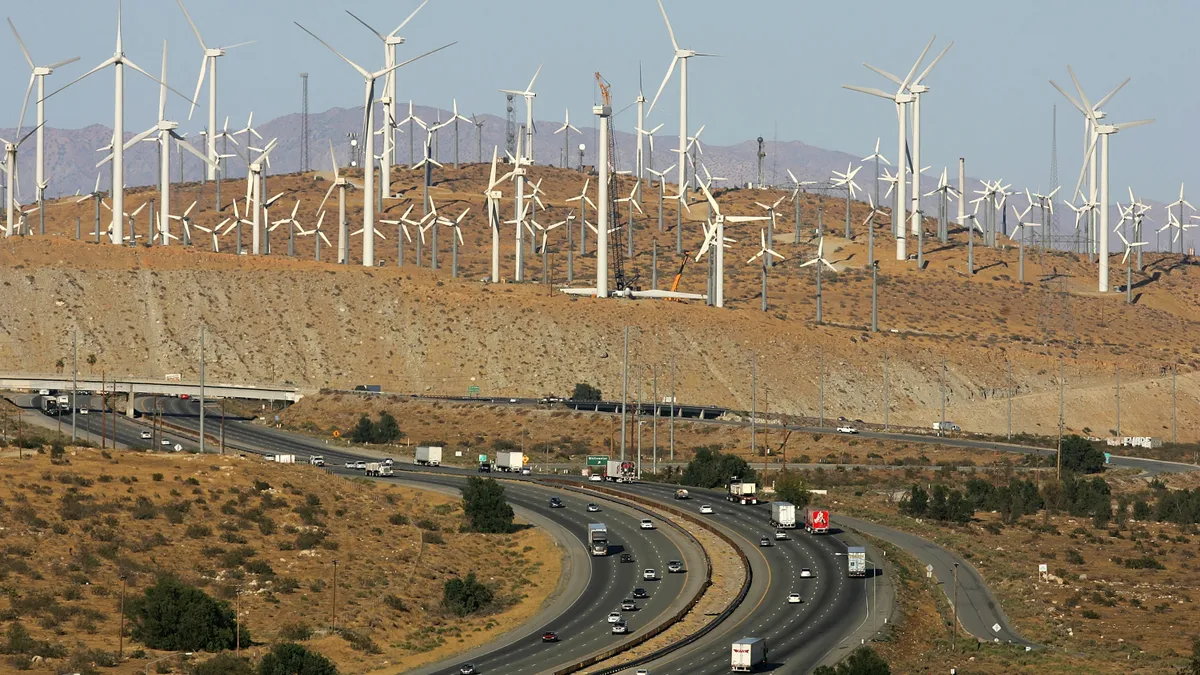Dive Brief:
- The California Public Utilities Commission (CPUC) has prepared two proposals for regulators to choose from to address the state's challenge of maintaining a reliable power grid after the Diablo Canyon nuclear plant and a suite of natural gas facilities are retired in the coming years.
- Both proposals would direct electricity providers, including utilities, to collectively procure 11,500 MW of resources that can come online between 2023 and 2026. But while one proposal allows utilities to include up to 1,500 MW of incremental capacity from fossil fuel resources in that package, the second would cap that at 500 MW.
- The inclusion of fossil fuels in both proposed decisions is "disappointing, but not unexpected," according to Michael Colvin, director of regulatory and legislative affairs at the Environmental Defense Fund. "We are going to have to recognize that the longer we keep these legacy fossil units online, the harder it is going to be to fully decarbonize the California economy," he added.
Dive Insight:
California's power sector is grappling with both short-term and longer-term grid reliability challenges, and regulators have been issuing a suite of decisions to tackle them. In recent months, the CPUC has approved two decisions aimed at preventing a repeat of the rolling blackouts that the state's grid operator was forced to initiate last year — one instructing utilities to contract additional capacity, and a second rolling out a series of demand-side measures as well as requiring a procurement of up to 1,500 MW for the next two years.
But the state faces broader grid challenges beyond 2022 as well. Pacific Gas & Electric is set to retire its last nuclear plant, the approximately 2,200 MW Diablo Canyon facility, by 2025. In addition, more than 3,700 MW of natural gas plants are also slated to retire in the coming years. In a filing to regulators last year, the California Independent System Operator warned that the system will reach a "critical inflection point" after the Diablo Canyon plant is shuttered.
The CPUC's new proposals are looking to solve this larger problem. Both proposed decisions — one from Administrative Law Judge Julie Fitch and the other from Commissioner Clifford Rechtschaffen — require load-serving entities to procure at least 11,500 MW of capacity in the next few years, divided into the following increments: 3,000 MW by 2023, 4,500 MW by 2024, 2,000 MW by 2025 and another 2,000 MW by 2026. Half of the last procurement package will need to come from long-duration storage and half some other kind of firm or dispatchable zero-emission resources, defined as having a minimum 85% capacity factor or between 17 and 22 hours of duration.
"It's a really staggering number — when you think of how California has done procurement in the past, it's certainly a significant ramp up," Noah Garcia, principal with Advanced Energy Economy, said.
At the same time, the proposed procurement tries to align with the recent report from California energy agencies that takes a closer look at getting the state to 100% renewable and zero-carbon electricity by 2045, according to Garcia. The report "essentially says we need to be building out renewables and storage at a really unprecedented clip," he added.
Where the two proposals differ is on the inclusion of fossil fuel resources. ALJ Fitch's plan allows utilities to procure between 1,000 MW and 1,500 MW of incremental capacity from fossil-fueled resources — via efficiency improvements, upgrades or repowering existing sites — by 2025, noting that "these resources are determined to be needed for system reliability overall."
Rechtschaffen's alternate proposed decision, however, would allow 500 MW of additional capacity from efficiency improvements, upgrades and expansions to existing fossil fuel facilities, provided the improvements reduce the rate of greenhouse gas emissions and the facilities are not located in disadvantaged communities. It would also authorize utilities to procure another 300 MW of fossil fuel capacity at existing facilities, if accompanied with a commitment to use 30% green hydrogen by 2026 and 50% green hydrogen by 2031.
Regulators are slated to consider both proposals at a commission meeting on June 24.
The inclusion of green hydrogen in the alternate proposal is interesting, EDF's Colvin said. While state legislators and the PUC have begun to think through how hydrogen could fit into the state's portfolio, they have not yet clearly defined what is and is not eligible to be "green" hydrogen, he said — for instance, would hydrogen generated by resources that are zero-carbon but not considered "renewable" under California law, like hydropower or nuclear energy count?
Putting out a market signal that regulators want some green hydrogen procurement is great, Colvin said, "but what fuel actually counts for that needs to be very quickly identified. Otherwise it is basically a very hollow crying call."
And on the proposals' inclusion of some degree of fossil fuel capacity, "the fact that they're limiting it as much as they are is in my mind a signal of how much they felt they could do at this moment in time. My guess is that this might be the last fossil authorization that we see coming out of the commission," Colvin said.














